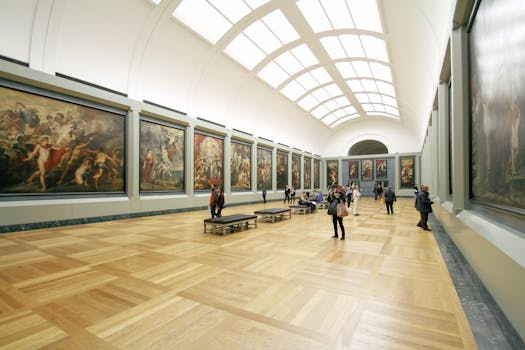Exploring the Rich Tapestry of Knowledge: The Importance of Visiting Museums
In an age dominated by digital information and rapid technological advancements, the value of visiting art, history, or science museums cannot be overstated. These institutions serve as gateways to understanding our past, appreciating artistic expression, and exploring scientific innovations. Whether you are a local resident or a traveler, immersing yourself in the exhibits of a museum can significantly enrich your knowledge and broaden your perspective.
The Educational Benefits of Museum Visits
Museums are not just repositories of artifacts; they are dynamic educational environments that foster learning and curiosity. Here are some key benefits of visiting museums:
- Hands-On Learning: Many museums offer interactive exhibits that engage visitors in a tactile way, making learning more memorable.
- Diverse Perspectives: Museums often showcase a variety of viewpoints, allowing visitors to understand different cultures and historical contexts.
- Expert Insights: Many museums provide access to knowledgeable staff and curators who can offer deeper insights into the exhibits.
- Community Engagement: Museums frequently host workshops, lectures, and events that encourage community involvement and discussion.
Case Study: The Smithsonian Institution
The Smithsonian Institution in Washington, D.C., is a prime example of how museums can serve as educational powerhouses. With 19 museums, 21 libraries, and a zoo, the Smithsonian attracts millions of visitors each year. According to their statistics, in 2019 alone, the Smithsonian welcomed over 30 million visitors, highlighting the public’s interest in learning through museum experiences.
One of the most popular museums within the institution is the National Museum of American History. Here, visitors can explore the evolution of American culture through artifacts such as the original Star-Spangled Banner and the First Ladies’ Inaugural Gowns. The museum’s interactive exhibits allow visitors to engage with history in a way that textbooks cannot replicate.
Art Museums: A Window into Human Expression
Art museums play a crucial role in showcasing human creativity and expression. They provide a platform for artists from various backgrounds and eras, allowing visitors to appreciate the nuances of different artistic movements. For instance, the Museum of Modern Art (MoMA) in New York City houses an extensive collection of contemporary art, including works by renowned artists like Vincent van Gogh and Andy Warhol.
Visiting art museums can also enhance emotional intelligence. Research indicates that viewing art can evoke emotional responses and foster empathy. A study published in the journal Psychological Science found that individuals who engage with art are more likely to develop a greater understanding of others’ feelings and perspectives.
Science Museums: Inspiring Future Innovators
Science museums are vital for inspiring the next generation of scientists and innovators. They often feature hands-on exhibits that encourage experimentation and exploration. The California Science Center in Los Angeles, for example, offers interactive displays on topics ranging from space exploration to environmental science.
Statistics show that children who visit science museums are more likely to pursue careers in STEM (Science, Technology, Engineering, and Mathematics) fields. A study by the American Association of Museums found that 80% of children who visited science museums expressed a greater interest in science after their visit.
Planning Your Museum Visit
To maximize your museum experience, consider the following tips:
- Research Ahead: Look up current exhibits and events to plan your visit around specific interests.
- Engage with Guides: Take advantage of guided tours or audio guides to gain deeper insights into the exhibits.
- Participate in Workshops: Many museums offer workshops that allow for hands-on learning and creativity.
- Reflect and Discuss: After your visit, take time to reflect on what you learned and discuss it with friends or family.
Conclusion: The Lasting Impact of Museum Visits
Visiting art, history, or science museums is an enriching experience that offers invaluable knowledge and insights. These institutions not only preserve our cultural heritage but also inspire curiosity and creativity. By engaging with the exhibits and participating in educational programs, visitors can deepen their understanding of the world around them. As we navigate an increasingly complex society, museums remain essential spaces for learning, reflection, and community engagement. So, whether you are exploring a local museum or traveling to a renowned institution, take the time to immerse yourself in the wealth of knowledge they offer. Your mind will thank you.
